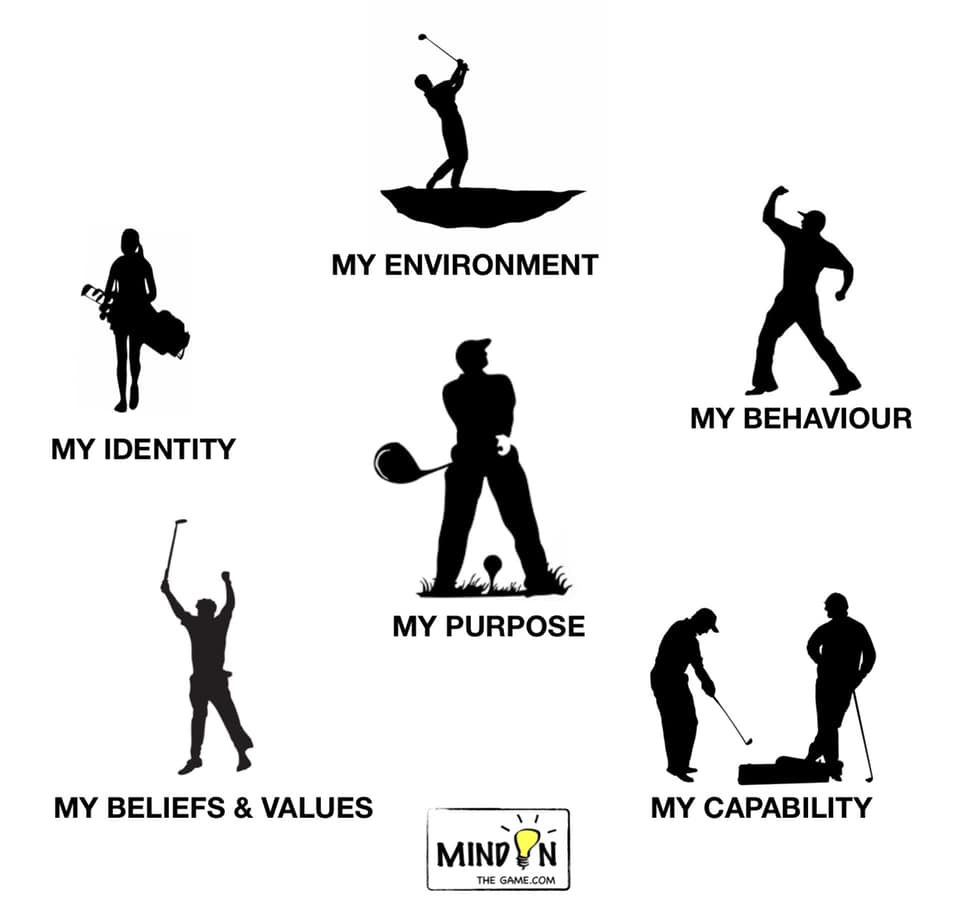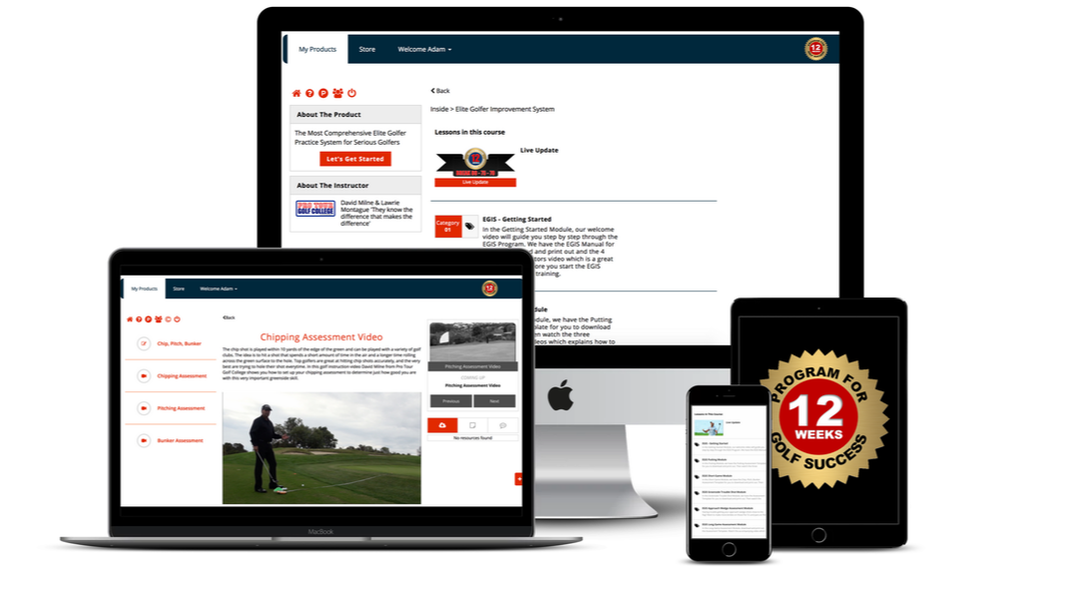|
I was asked an excellent question by PGA Professional Damon Lucas about how we cultivate self-belief in our players. I thought I’d share my response to him with you for interests sake. “It is difficult to answer your question easily without giving you a little more background into a small part of what we do... As we know, everyone’s level of self-belief as it relates to managing thoughts, feelings and actions under perceived pressure is different. With that said, there are a number of factors I can share with you that in my experience have helped our students to perform better when they believed they had to... Let me preface that by saying that I’m still actively searching for more effective ways of teaching the elements I’m about to share. Many of the high performance coaches from other sports I’ve had the pleasure of meeting and working with all shared a common goal of finding ways to get their students to perform better under pressure. Ironically, this appears to be at odds with current golf culture, where technical mastery is still seen as the key to success. Clearly, it wasn’t just technical mastery that got Brooks Koepka over the line on the final day at the recent PGA Championship. One of the most significant observations I’ve made of our industry is that for the most part elite golfers (in particular) are trying to perform without regular structured inner game coaching. The 4 legged stool of Physical / Technical / Tactical is missing the one leg that is arguably the most important one, the Mental leg. So I’ll start by sharing a tremendously helpful and useful model by Robert Dilts named The Logical Levels Framework. I first came across this model 20 or so years ago, and it made such a useful addition to my ongoing collection of idea’s, concepts and schema for developing golfers skills that I still use it on a daily basis. I have found it to be very useful for managing the various elements that help us to help our students stay on a path towards their goals. 1. Environment (Where, When, and With Whom) - How we use the practice facility to prepare our students for tournaments, and the golf course design, constraints and weather conditions. The training environment in our program in Jakarta has to facilitate the improvement of a players performance under pressure. 2. Behaviour (What You Say and Do) - How our students behave in the training environment and how this translates into performance on the golf course during tournament play. I would say that this level is the most important for us. Behavioural shaping is a daily process of constantly shaping of behaviour during training over 4 + hours and includes self-talk. 3️⃣ 3. Capabilities (How You Do It?) - The students knowledge, skills and competencies and how they relate that experience to performing closer to their expectations in tournaments. We spend more time developing skills from 100 yards and in (including putting green) plus E.Q. Development. The ratio is approximately 70 percent scoring/mental skills to technical/tactical and physical skills. We teach our students to understand that more quality practice = less variance, which is a useful insight. So more quality practice can mean more technical stability—although this doesn’t necessarily mean more improvement. This is why we’re heavily influenced in our decision making regarding which skills we will spend more time developing in our students games using basic probability formula which describes the ratio of the number of favourable outcomes that occur to the total number of possible outcomes that can occur. Probability of an Event. This measures the likelihood of an event in the following way: - If P(A) > P(B) then event A is more likely to occur than event B. So in our training process, we want to aim for a higher probability of success by focusing on and developing skills that are simpler to execute and thus easier to produce—shots that ultimately set-up shorter putts for par or birdie. 4️⃣ 4. Beliefs and Values (Why We Do What We Do?) - What you believe to be true, right or wrong. At this level we establish the elements that are important to performing confidently in challenging conditions. Since randomness is a measure of the uncertainty of an outcome, rather than say haphazardness, we explain to our students that even the best plans are doomed to fail most times simply because of the infinite amount of possible variables in the environment that cannot be controlled. This means that our students beliefs and values are shaped around randomness and uncertainty, a platform built on realistic probability rather than fantasy land ideals. Our training process continually shapes their thinking to the extent that in time they start to believe in similar values to ours. 5. Identity (Who I Am) - How you think of yourself in the context of what you do. We want to develop golfers who are confident in situations that others find stressful. So for us, the easiest way for us to define ‘The Who’ - or a helpful self-image as it pertains to performing under pressure. We call this the Tour Tough Identity, and it describes how our students see themselves in terms of managing the normal interference and distraction that occurs when competing. By helping our students develop their mental/emotional stability under pressure, they learn to guide their behaviour in tournaments towards the following outcomes: > To achieve relatively consistent score average over 2 to 4 days regardless of situational factors; > To display confident posture and speak positively even when things are not going as planned; > To deal with unplanned or unexpected distractions and interference without letting it impede their ability to fully focus; > To expect and manage normal set-backs easily; > To remain determined to score low even when the ‘going gets tough’; 🔴 > To have the resilience to bounce back from big number disappointments. 6️⃣ 6. Purpose (What For) - Relates to the bigger picture in life. To describe Purpose or Mission, I like Sir John Whitmore’s definition of personal responsibility as it relates to achieving one’s goals; “the full expression of one’s potential demands taking total responsibility or ownership. If it did not, it would not be one’s own potential, it would be partly someone else’s.” In our training process, every student in our National Development Program goes through a periodised goal process that focuses on breaking a 12 month period into 4 x 3 month periods that are further broken down into months, weeks and individual training days. All activity that takes place within this 3 month period is designed around performing to expectations in tournaments. We use the following equation D = V x A (Dedication to the goal = the value of the goal x the ability to achieve it) this one of many we use for the different dimensions of our program to help our students to understand how to pick goals that they consider valuable or important to them rather than someone else. (see Sir John Whitmore’s quote). There is so much more I could share, but I think you can see that cultivating self-belief is a monumental task that encompasses many elements within it. To your success, Lawrie Montague IF YOU'RE SERIOUS ABOUT YOUR GAME |
Archives
June 2019
|
Proudly Supported By
Copyright © 2011 - 2018 Pro Tour Golf College
Website Managed By Golf Performance Media
All Rights Reserved
Website Managed By Golf Performance Media
All Rights Reserved



 RSS Feed
RSS Feed



